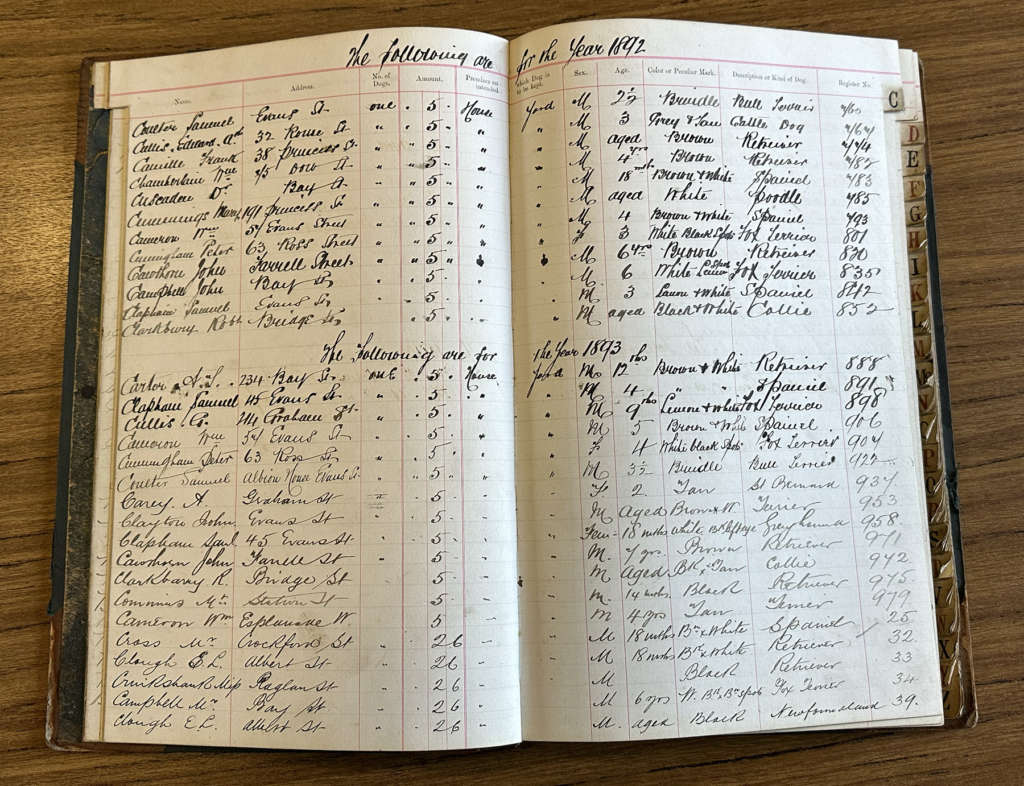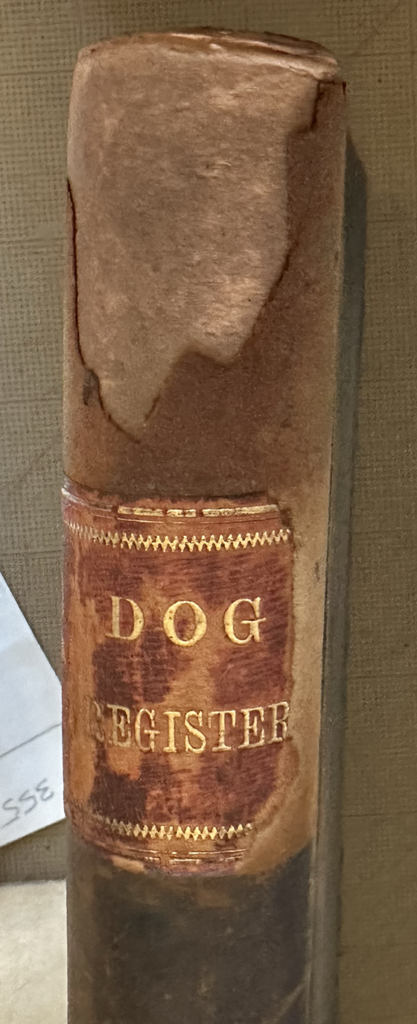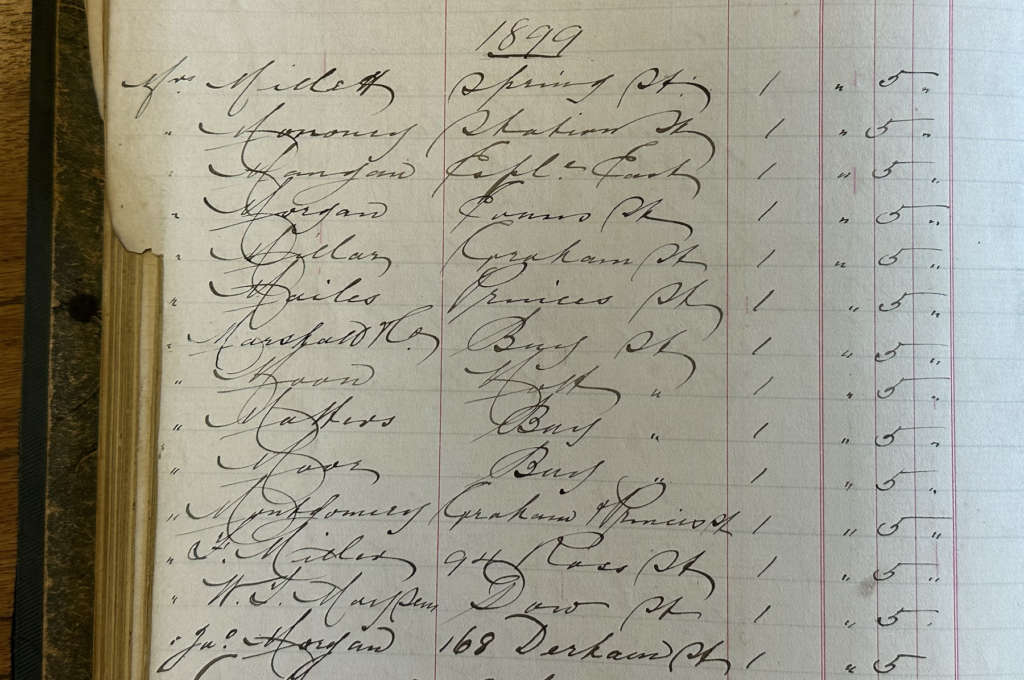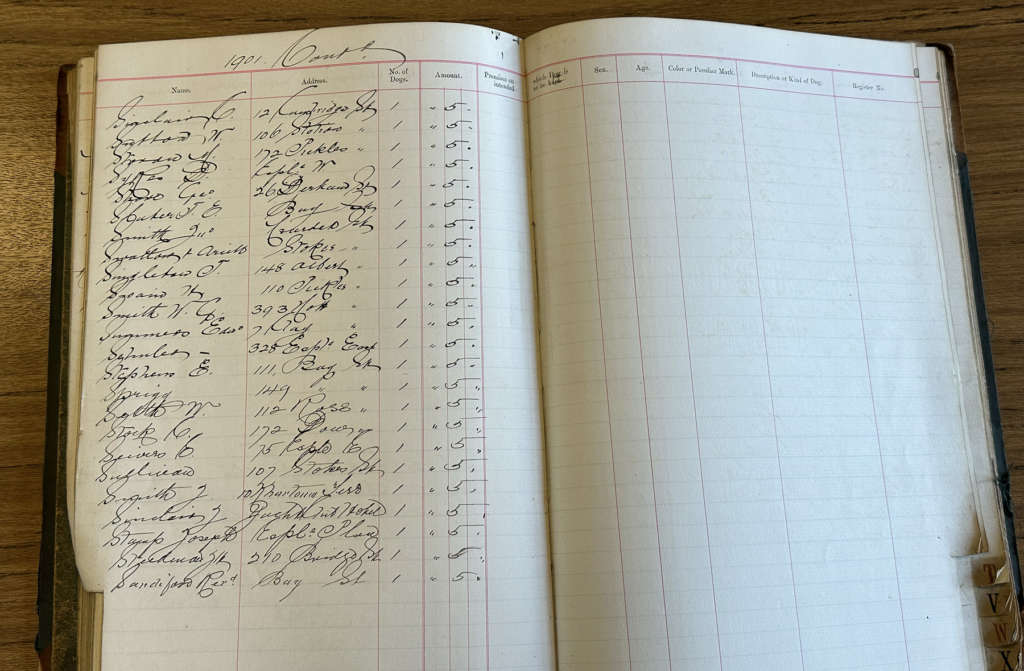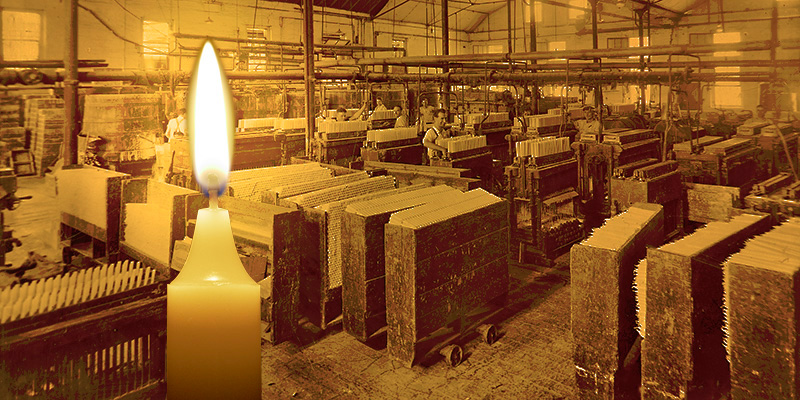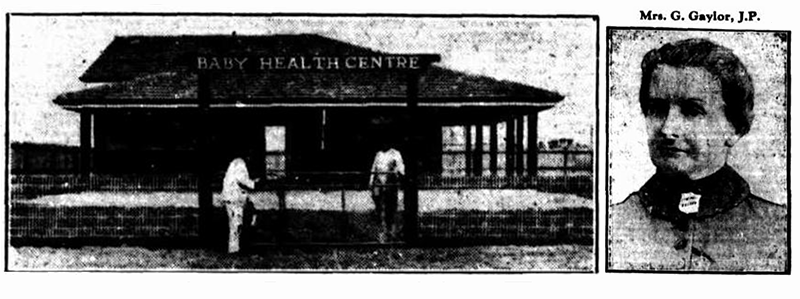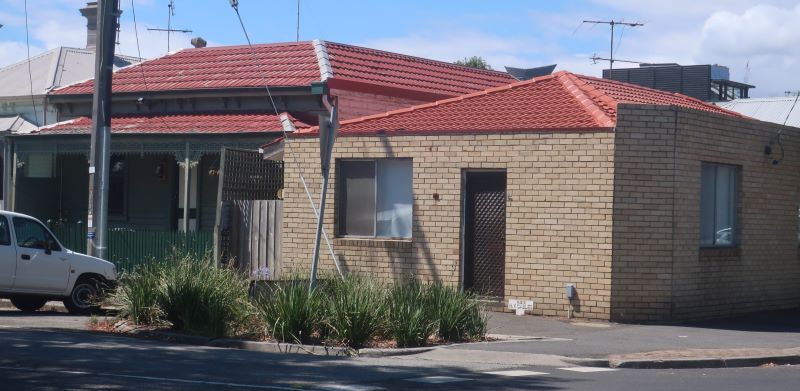Dogs in Port
A Random post about dogs from 2013 mentions that the Society holds a Register of Dogs in Port Melbourne from 1892 (Cat No 1730). In fact PMHPS holds six items relating to the registration of dogs covering the period 1882 to 1915 so let’s take a closer look at the book that covers the years 1892 to 1901.
The register lists owners in alphabetical order by surname and includes their Address, the Number of Dogs they have, Amount Paid, Premises on which Dog is intended to be kept, Sex, Age, Color [sic] or Peculiar Mark, Description or Kind of Dog, and the Register No.
The information recorded is self-explanatory and it looks like it was intended that the majority of dogs were to be kept in the yard at the owner’s house.
The page above shows the registrations for 1892 and 1993 for owner’s whose surname begins with ‘C’. There are a wide variety of dog breeds and sizes recorded on this page alone – Bull Terrier, Cattle Dog, Retriever, Spaniel, Poodle, Fox Terrier, St Bernard, Greyhound and even a Newfoundland.
Not unexpectedly there are familiar Port Melbourne names amongst the owners. In the fifth entry under ‘C’ we see that Dr Cuscaden owned an 18 month old, brown and white, male Spaniel in 1892.
Interestingly, the majority of dogs on this page are male with only Peter Cunningham of 63 Ross St owning a female, white Fox Terrier with black spots in both 1892 and 1893; then A Carey of Graham St (female tan St Bernard) and Samuel Chapman of 45 Evans St (female white Greyhound with a black left eye) owning female dogs in 1893.
The passing of subsequent years is evident by the change of the style of the handwriting and the information recorded. By the late 1890s the person completing the register has flowing cursive handwriting that to 21st century eyes is sometimes difficult to decipher.
And sadly by 1901 the information relating to the dog was often not recorded.
Throughout the period covered by this book the usual registration fee was 5 shillings per dog although a small number were charged at 2/6. It is not clear from the register why these dogs attracted a reduced fee. For example, in 1893 Dr Malcolmson and Morley Co paid 2/6 respectively for their 9 month old St Bernard and aged Newfoundland, as can be seen below.
That same year Mrs N McLeod of Evans St paid 2/6 for her 5 year old black and white Retriever yet paid 5/- for the same dog the following year. Perhaps detailed scrutiny of the register could unlock a pattern to the charges.
Norman McLeod first appears in Evans St in the Sands & McDougall Directory of 1876 when Port Melbourne was known as Sandridge and the houses were unnumbered. In the 1880s the house became No 55 and in 1890 Norman McLeod Jnr, presumably his son, was living at 63A Evans Street. It is his wife, Mrs Norman McLeod jnr, who registered the black and white Retriever in 1893 and 1894.
In 1895 the Retriever was no longer registered but Norman McLeod was recorded as the owner of a 6 year old brown mongrel. The register does not record the house number in Evans St but we can perhaps determine that the mongrel belonged to Norman McLeod snr as we follow the registration through the subsequent years. The brown mongrel from 1895 and 1896 becomes a half Setter in 1897 then is described simply as a 9 year old brown Setter in 1898.
In 1899, N McLeod of 112 Evans St owns a 1 year old Irish Terrier. This is definitely Norman snr as houses in Evans St were renumbered in 1896 with No. 55 becoming No. 112. That same year, an N McLeod of 132 Evans St is registered as the owner of a 6 month old black Cocker Spaniel. This is Norman jnr (or his wife) as No. 63A became No. 132 during the renumbering. Both are again listed in 1900 but there are no McLeod’s listed in the register for the year 1901.
The Sands & McDougall Directory of 1902 confirms that the junior McLeods were no longer resident at 132 Evans St and the directory of 1903 shows that Norman McLeod snr was no longer at 112 Evans St.
So often we are only able to follow history through the deeds of ‘the good, the bad and the ugly‘ reported in the pages of the local newspapers so it is fascinating to look into the minutia of domestic life through the dogs owned by the ordinary citizens of Port Melbourne over 120 years ago.

